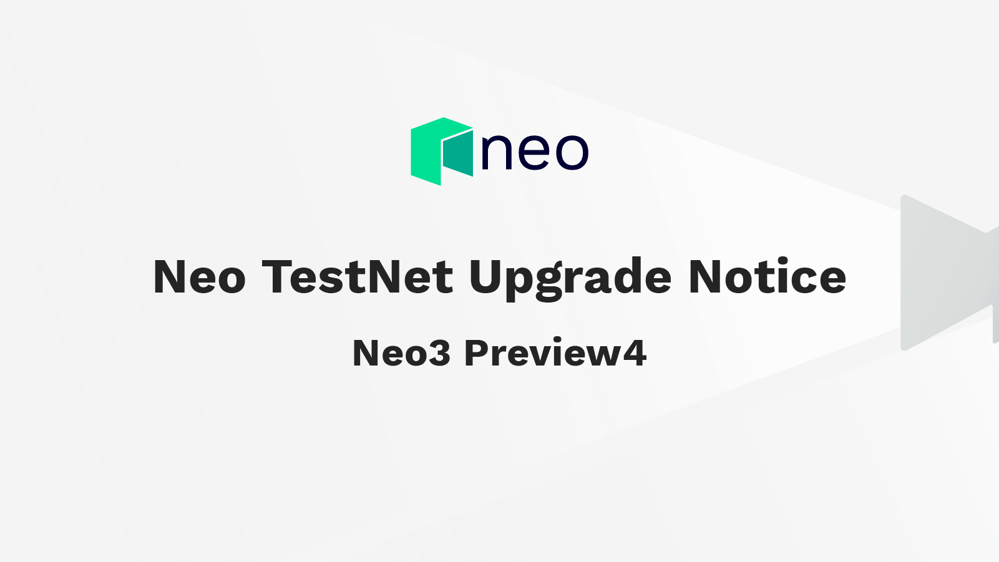BLOG December 22, 2020
Neo3 Preview4 TestNet Upgrade Notice
Neo3 Preview4 is now released with the implementation of the new economic model while providing some new supplements to the committee governance strategy. This release also officially introduces the Oracle service which enables smart contracts to obtain external data, as well as a new token standard, NEP-17, together with other optimizations & fixes.
NGD will perform the Neo3 Preivew4 TestNet upgrade from UTC 6:00AM to 9:00AM, 22nd December 2020. The TestNet might be temporarily unstable during this period. We are sorry for any inconvenience caused.
The comprehensive list of improvements and optimizations in this version:
New economic model
Inheriting from Neo2, Neo3’s economic model continues to adopt the NEO-GAS dual token mechanism. NEO represents the right to manage the network, while GAS is the fuel token for the realization of Neo network resource control. NEO has a total circulation of 100 million and remains indivisible (The minimum unit of NEO is 1 and cannot be subdivided). GAS in Neo3 doesn’t have a limited circulation amount, and transaction system fee will be burned, which is different from Neo2.
NEO holders own and manage Neo network. The minimum unit of GAS is 10^-8. GAS represents the right to use Neo network, and can be obtained from voting, holding NEO or external exchanges.
Furthermore, a particular amount (initially 5) of GAS will be generated in every block. This amount of GAS will be distributed by the follow rule:
- 10% to NEO holders;
- 10% to committee members;
- 80% to voters who vote for the committee members.
Supplements to the committee governance strategy
In Neo3, the governance committee can make changes to a series of on-chain metrics. In Preview4, some supplements to committee governance strategy have been applied, including:
- Storage price per byte
- Execution fee factor
Oracle
Oracle enables smart contracts obtaining data and information from external sources. Oracle obtains corresponding information with a decentralized way according to the requests by smart contracts.
A typical Oracle process is as follows:
- User registers an oracle requests by sending a transaction calling Oracle contract. This request should include requested URL and information of callback function.
- Oracle nodes keep on listening to data on chain, and visit requested URL to obtain corresponding data, upon discovering a new Oracle request.
- Oracle nodes will sign obtained data and communicate with other Oracle nodes via RPC requests.
- When more than 2/3 of Oracle nodes reach consensus upon the data, a transaction which includes requested data as well as callback functionality will be sent.
- This transaction will be verified and published on chain by consensus nodes. Upon transaction execution, corresponding smart contract’s callback function will be called to send requested data message.
NEP-17
Another important implementation in Preview4 is NEP-17.
“NEP” stands for Neo Enhancement Proposal. A NEP is a design document providing information to the Neo community, or describing a new feature for Neo or its processes or environment. The NEP should provide a concise technical specification of the feature and a rationale for the feature.
NEP-17 is a token standard that represents a tokenized smart contract. The NEP-17 standard regulates tokens issued on the Neo blockchain, and will replace NEP-5 as the new token standard in Neo3.
Other improvements and optimizations
- Added paralleled transaction witness verification;
- Updated contract to keep the original hash of the contract after content modification;
- Allowed deploying native contracts at any height;
- Adjusted some opcode prices;
- Other improvements.
 MIGRATE TO N3
MIGRATE TO N3
